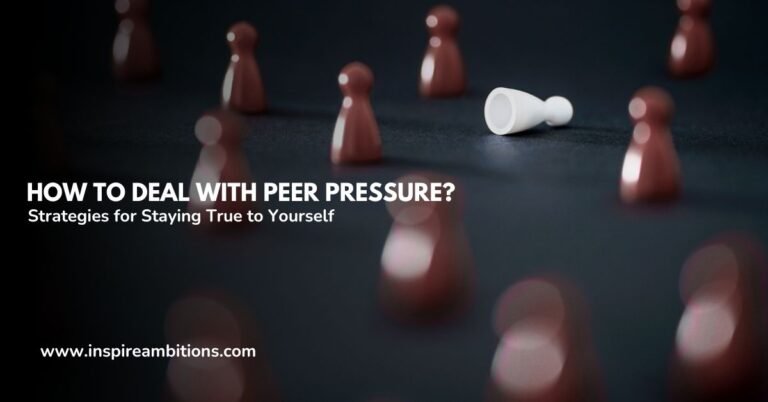専門的な自己啓発計画の例
A personal development plan is a roadmap that outlines an individual’s goals, strengths, weaknesses, and areas of improvement. It is a tool for self-reflection and self-improvement, providing a clear direction for personal and professional growth. A well-crafted personal development plan can help individuals identify their strengths and weaknesses, set realistic goals, and create a plan of action to achieve them.
Personal development plans are particularly important for professionals who want to advance their careers and achieve success. By identifying areas for improvement and setting achievable goals, professionals can develop the skills and knowledge they need to take their careers to the next level. In this article, we will explore some personal development plan examples for professionals, providing insights and inspiration for those looking to create their plans of action. From managing stress to building professional relationships, we will cover a range of goals and strategies to help individuals succeed in their personal and professional lives.
Understanding Personal Development Plan
A Personal Development Plan (PDP) is a tool that helps individuals identify their strengths and weaknesses and plan for their personal and professional growth. It is a structured approach to self-improvement that involves setting goals, creating an action plan, and tracking progress. A PDP is a useful tool for anyone who wants to achieve their full potential and improve their performance in their personal and professional life.
A PDP is often used interchangeably with a Professional Development Plan (PDP). A Professional Development Plan is a more focused version of a PDP tailored to an individual’s career goals. It is a tool that helps professionals identify their skills gaps and plan their career development. A PDP is essential for anyone who wants to take their career to the next level.
A Career Development Plan (CDP) is another tool often used interchangeably with a PDP. A CDP is a more comprehensive PDP that includes long-term career goals. It is a tool that helps individuals to plan their career paths and achieve their career objectives.
An Employee Development Plan (EDP) is a tool employers use to help employees develop their skills and achieve their career goals. An EDP is a structured training and development approach involving setting goals, creating an action plan, and tracking progress. An EDP is an essential tool for employers who want to retain top talent and ensure their employees have the skills they need to succeed.
An Individual Development Plan (IDP) is similar to a PDP, but organisations use it to help employees develop skills and achieve their career goals. An IDP is a structured training and development approach involving setting goals, creating an action plan, and tracking progress. An IDP is an essential tool for organisations that want to retain top talent and ensure their employees have the skills they need to succeed.
In summary, a PDP is a tool that helps individuals identify their strengths and weaknesses and plan for their personal and professional growth. It is a structured approach to self-improvement that involves setting goals, creating an action plan, and tracking progress. A PDP is a useful tool for anyone who wants to achieve their full potential and improve their performance in their personal and professional life.
自己啓発計画の重要性
A Personal Development Plan (PDP) is a powerful tool to help individuals achieve their career goals, improve their professional development, and enhance their personal growth. It is a structured approach to identifying an individual’s strengths and weaknesses, setting goals, and creating a plan to achieve those goals.
Creating a PDP is essential for career success. It allows individuals to take control of their careers and take steps to improve their skills and knowledge. A PDP can help individuals identify areas where they need to improve, such as technical, communication, or leadership skills. By identifying these areas, individuals can enhance their skills and become more effective in their current position or prepare for a managerial position.
A PDP is also essential for professional development. It helps individuals stay up-to-date with industry trends, technologies, and best practices. By staying current, individuals can improve their job performance and contribute to the success of their team and organisation. A PDP can also help individuals identify new opportunities for growth and advancement.
Personal development is also a critical aspect of a PDP. It allows individuals to identify their personal goals and aspirations and take steps to achieve them. Personal development can include improving health and well-being, building stronger relationships, or pursuing hobbies and interests. Individuals can improve their overall quality of life by setting personal goals and creating a plan to achieve them.
In summary, a Personal Development Plan is essential for career success, professional development, and personal growth. It allows individuals to take control of their careers, improve their skills and knowledge, stay up-to-date with industry trends and best practices, and achieve their personal goals and aspirations.
Components of a Personal Development Plan
A Personal Development Plan (PDP) is a structured process undertaken by an individual to reflect on their learning and development needs and plan how to fill their learning gap. Creating a PDP can help individuals identify their strengths and weaknesses and set specific goals to develop their skills and knowledge. A well-designed PDP should include the following components:
Specific Goals
Setting specific goals is essential when creating a PDP. Goals should be clear, concise, and achievable. Particular goals help individuals focus their efforts and increase their chances of success.
Measurable Targets
Measurable targets are essential to track progress and determine whether goals have been achieved. Measurable targets should be quantifiable and provide a clear indication of progress.
Achievable Steps
Achievable steps are the specific actions that individuals need to take to achieve their goals. These steps should be realistic, achievable, and aligned with the individual’s strengths and weaknesses.
Relevant Skills
Identifying relevant skills is essential when creating a PDP. Individuals should identify the skills they need to develop to achieve their goals, including professional, soft, and hard skills.
Timely Timeframe
Setting a timely timeframe is essential to keep individuals focused and motivated. A timely timeframe ensures that individuals stay on track and achieve their goals within a specific period.
In conclusion, a well-designed PDP can help individuals identify their strengths and weaknesses and set specific goals to develop their skills and knowledge. The components of a PDP include specific goals, measurable targets, achievable steps, relevant skills, and a timely timeframe. By following these components, individuals can create a PDP tailored to their needs and help them achieve their goals.
Creating a Personal Development Plan
To achieve personal growth and career success, it is essential to create a personal development plan. This plan helps identify strengths and weaknesses, set goals, and map out actionable steps to achieve the desired outcome. Here are some sub-sections to consider while creating a personal development plan:
長所と短所を特定する
The first step to creating a personal development plan is identifying strengths and weaknesses. Conducting a self-assessment helps to understand personal and professional goals. Considering current position, interests, passions, and qualities is essential. This helps to identify strengths and weaknesses in relation to the goals.
Setting Long-Term and Short-Term Goals
Setting long-term and short-term goals is essential in creating a personal development plan. Long-term goals help to create a vision of where one wants to be in the future, while short-term goals help to achieve long-term goals. Goals should be specific, measurable, achievable, relevant, and time-bound.
Mapping Out Actionable Steps
Mapping out actionable steps is critical in achieving the set goals. These steps should be specific, measurable, achievable, relevant, and time-bound. Breaking down long-term goals into smaller achievable goals makes tracking progress and staying motivated easier.
Setting Deadlines
Setting deadlines helps to create a sense of urgency and accountability. Deadlines should be realistic and achievable. It is essential to set deadlines for both short-term and long-term goals.
Reviewing and Adjusting the Plan
Reviewing and adjusting the plan is essential to track progress and make changes when necessary. Regularly reviewing the plan and reflecting on the progress made helps identify areas needing improvement. Adjusting the plan helps to stay on track and achieve the set goals.
In conclusion, creating a personal development plan is essential to achieve personal growth and career success. Identifying strengths and weaknesses, setting long-term and short-term goals, mapping out actionable steps, setting deadlines, and reviewing and adjusting the plan is crucial in creating a successful personal development plan.
Role of Mentorship in Personal Development Plan
Mentorship plays a crucial role in personal development plans. A mentor is an experienced and trusted advisor who provides guidance, knowledge, and support to individuals seeking to develop their skills and achieve their goals. The mentor-mentee relationship is built on trust, respect, and mutual understanding, and it is focused on enabling the mentee to achieve their goals.
Mentors can provide a wealth of knowledge and experience, which can be invaluable to a mentee. They can help identify areas for improvement, provide feedback, and offer advice on developing new skills. They can also provide insights into the industry or profession and help the mentee navigate challenges and opportunities.
Mentorship can be especially beneficial for individuals new to a profession or industry. A mentor can help them understand the culture, norms, and expectations of the profession and provide guidance on how to succeed. They can also help the mentee build their network and connect with other professionals in the industry.
In a personal development plan, a mentor can help the mentee identify their strengths and weaknesses and develop a plan to improve their skills and achieve their goals. They can help the mentee set realistic goals, create a plan of action, and provide support and accountability throughout the process. By providing guidance and support, a mentor can help the mentee achieve their full potential and succeed in their chosen profession.
In conclusion, mentorship is an essential component of personal development plans. A mentor can provide guidance, knowledge, and support to help the mentee achieve their goals and develop their skills. The mentor-mentee relationship is built on trust, respect, and mutual understanding, and it can be a valuable resource for individuals seeking to improve their professional skills and achieve success in their chosen field.
Incorporating SMART Goals in Personal Development Plan
A personal development plan (PDP) is a document that outlines an individual’s goals, strengths, weaknesses, and strategies to achieve personal and professional growth. Incorporating SMART goals in a personal development plan can make it more effective and achievable.
What are SMART Goals?
SMART goals are specific, measurable, achievable, relevant, and time-bound. They help individuals to set clear and realistic goals that can be achieved within a particular timeframe. SMART goals are more effective than general goals because they provide a clear direction and focus on what needs to be accomplished.
How to Incorporate SMART Goals in a Personal Development Plan
When creating a personal development plan, it is important to incorporate SMART goals to make it more effective. Here are some steps to follow:
- Identify your goals: Start by identifying your personal and professional goals. Your goals should be specific and measurable. For example, instead of setting a goal to “improve my communication skills,” set a SMART goal to “deliver a presentation to a group of 20 people within the next three months.”
- Make your goals achievable: Your goals should be realistic and achievable. Setting unrealistic goals can lead to frustration and disappointment. Make sure your goals are challenging but achievable.
- Make your goals relevant: Your goals should be relevant to your personal and professional growth. Ensure your goals align with your values, interests, and career aspirations.
- Make your goals time-bound: Set a deadline for achieving your goals. This will help you stay focused and motivated. Make sure your deadline is realistic and achievable.
Benefits of Incorporating SMART Goals in Personal Development Plan
Incorporating SMART goals in a personal development plan can have several benefits, including:
- Clear direction and focus: SMART goals provide a clear direction and focus on what needs to be accomplished. This can help individuals to stay motivated and on track.
- Measurable progress: SMART goals are measurable, meaning individuals can track their progress and make necessary adjustments.
- Achievable goals: SMART goals are realistic and achievable, which can help individuals to avoid frustration and disappointment.
In conclusion, incorporating SMART goals in a personal development plan can make it more effective and achievable. Following the steps outlined above, individuals can set clear and realistic goals aligning with their personal and professional growth.
Role of Training and Seminars in Personal Development Plan
Training, seminars, workshops, and other learning and development opportunities are essential to a successful personal development plan. These activities provide individuals with the opportunity to acquire new knowledge, skills, and competencies that are critical to their professional growth.
One of the primary benefits of attending training and seminars is that they allow individuals to stay up-to-date with the latest industry trends and best practices. By keeping abreast of the latest developments, individuals can ensure they are equipped with the knowledge and skills needed to succeed in their chosen field.
Another benefit of attending training and seminars is that they allow individuals to network with other professionals in their field. By interacting with other professionals, individuals can gain valuable insights into the challenges and opportunities facing their industry and build relationships that can help them advance their careers.
In addition to attending external training and seminars, individuals can also benefit from participating in internal learning and development programs offered by their organisation. These programs can help individuals acquire new skills and competencies specific to their roles and responsibilities and provide them with opportunities to advance their careers within the organisation.
Overall, the role of training and seminars in personal development plans cannot be overstated. By taking advantage of these opportunities, individuals can acquire the knowledge, skills, and competencies needed to succeed in their chosen field and build relationships that can help them advance their careers.
Balancing Personal and Professional Goals
Balancing personal and professional goals is essential to creating a personal development plan. It’s important to consider both aspects of your life when setting goals, as they are interconnected and can impact each other.
When setting personal goals, consider what you want to achieve in your personal life. This could be anything from improving your health and fitness to learning a new skill or hobby. It’s important to set achievable and realistic goals, as this will help you stay motivated and focused.
Similarly, consider what you want to achieve professionally when setting career goals. This could be anything from getting promoted to learning a new skill or taking on new responsibilities. Setting goals that align with your career aspirations and are achievable within your current role is essential.
One way to balance personal and professional goals is to focus on work-life balance. This involves balancing your work responsibilities and personal life, such as spending time with family and friends or pursuing hobbies and interests.
Setting boundaries and prioritising your time effectively to achieve work-life balance is important. This could involve setting aside dedicated time for personal activities or delegating tasks at work to free up time for personal pursuits.
Ultimately, balancing personal and professional goals requires careful consideration and planning. You can succeed in both areas of your life by setting achievable goals and prioritising your time effectively.
Examples of Personal Development Plan
A personal development plan (PDP) is a tool that helps individuals identify their strengths and weaknesses and create a roadmap for achieving their career goals. Here are some examples of personal development plan templates and samples that can help you make your plan:
- Template from High-Speed Training
The High-Speed Training website offers a free personal development plan template with seven PDP steps. The steps include setting goals, prioritising those goals, setting deadlines, recognising threats and opportunities, developing skills or increasing knowledge, using a support network, and measuring progress. This template is a great starting point for anyone new to creating a personal development plan.
- Example from the Chartered Management Institute
The Chartered Management Institute (CMI) provides an example of a personal development plan designed for managers. The plan includes sections for personal analysis, career objectives, development needs, and action plans. It also includes a section for reviewing progress and updating the plan as necessary. This example is helpful for anyone in a management position or looking to move into one.
- Sample from The BMJ
The British Medical Journal (BMJ) offers a sample personal development plan tailored to healthcare professionals’ needs. The plan includes identifying learning needs, setting goals, planning activities, and evaluating progress. It also includes a section for reflecting on the plan’s impact on patient care. This sample is helpful for anyone who works in the healthcare industry.
Overall, many different personal development plan templates, examples, and samples are available online. These resources can help you create a plan tailored to your career goals and needs.
結論
In conclusion, creating a personal development plan is crucial to achieving one’s goals and aspirations. It provides a clear vision and direction for personal growth and development. By conducting a self-assessment, individuals can identify their strengths and weaknesses, which can help them to set realistic goals and objectives.
A well-crafted personal development plan should include a strategy for achieving these goals and a timeline for completion. It should also consider an individual’s level of satisfaction and motivation, as these factors can play a significant role in their success.
It is important to note that a personal development plan should not be seen as a one-time exercise. Instead, it should be reviewed and updated regularly to remain relevant and practical. This can help keep individuals inspired and motivated and provide opportunities for new learning and growth.
Overall, a personal development plan is essential for anyone who wants to achieve their full potential. With the right mindset, focus, and dedication, individuals can use this tool to create a clear path towards success and fulfilment in their personal and professional lives.






